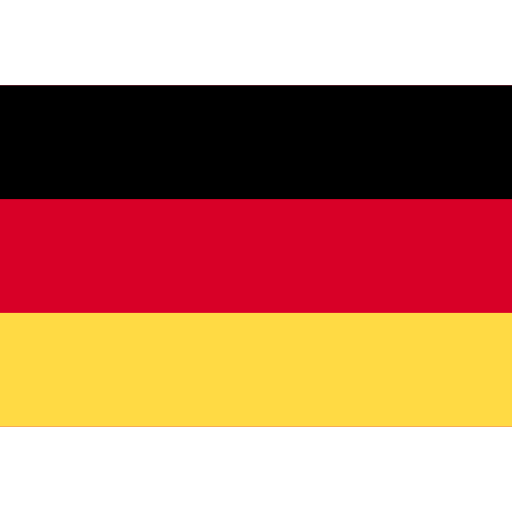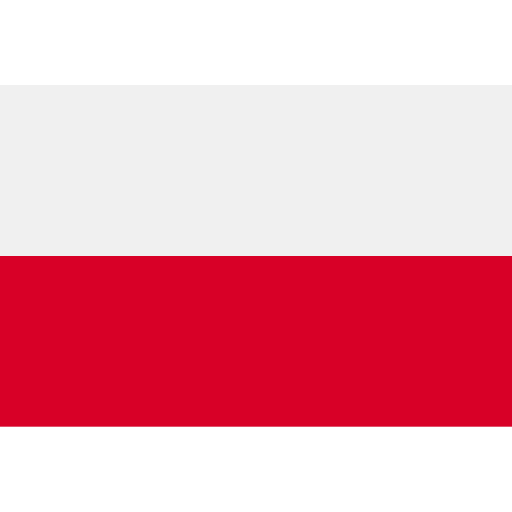Requirements for SOC – substances of concern - in Packaging (Article 5)
Minimization of Substances of Concern – Packaging placed on the market must be manufactured to minimize the presence and concentration of substances of concern in the packaging material or components. This includes emissions and waste management outcomes (e.g., secondary raw materials, ashes), and adverse environmental impacts such as microplastics.
Monitoring and Reporting
- The European Commission will monitor the presence of substances of concern in packaging and adopt follow-up measures as needed.
- By 31 December 2026, the Commission, assisted by the European Chemicals Agency (ECHA), must prepare a report on substances of concern in packaging to assess their impact on reuse, recycling, and chemical safety. This report may identify substances that pose unacceptable risks to health or the environment.
Actions Based on Findings
- If substances primarily affecting health or the environment are identified, the Commission may impose new restrictions under Article 68(1) and (2) of Regulation (EC) No 1907/2006.
- If substances hinder reuse or recycling, restrictions may be included in design-for-recycling criteria under Article 6(4).
Member States’ Role
- By 31 December 2025, Member States must report substances that hinder reuse or recycling, supported by relevant data or risk assessments.
- Member States can request the Commission to impose additional restrictions if substances hinder recycling for reasons unrelated to chemical safety.
Restriction on Specific Hazardous Substances
The total concentration of lead, cadmium, mercury, and hexavalent chromium in packaging must not exceed 100 mg/kg.
For food-contact packaging, limits on per- and polyfluorinated alkyl substances (PFAS) are set as follows:
- 25 ppb for any targeted PFAS (excluding polymeric PFAS)
- 250 ppb for the sum of PFAS after degradation of precursors
- 50 pm for all PFAS (including polymeric PFAS), with fluorine verification if total exceeds 50 mg/kg
Evaluation of PFAS Restrictions – By 5 years and 6 months after the regulation’s entry into force, the Commission will evaluate PFAS restrictions to avoid overlaps with existing regulations.
Delegated Acts for Updates – The Commission can adopt delegated acts to lower hazardous substance limits or to exempt recycled materials or closed-loop product systems from these limits, provided adequate safeguards are in place.
Review and Progress Evaluation – By 8 years and 6 months after the regulation’s entry into force, the Commission will assess whether this article and recycling design criteria have effectively minimized substances of concern in packaging.
Technical Documentation – Compliance with hazardous substance limits must be documented as outlined in Annex VII of the regulation.
Solutions – Requirements for SOC – substances of concern – in Packaging
Packaging recyclability (Article 6)
The Packaging and Packaging Waste Regulation sets key requirements to improve the recyclability of packaging – all packaging placed on the EU market, including imported items, must be designed to be recyclable by design and at scale.
Recyclability Criteria – meeting both of the following in parallel:
- Design for Recycling by 2030: All packaging introduced to the EU market, including imports, must be designed for recycling by 2030.
- Recycling at Scale by 2035: By 2035, each packaging material should achieve a minimum recycling rate of 55% in each Member State.
Recyclability Performance Grades – Packaging will be assessed and assigned performance grades ranging from A to C to evaluate recyclability.
Market Access Based on Grades:
- After 2030: Only packaging with grades A, B, or C will be permitted on the market.
- After 2035: Only packaging with grades A or B will be allowed.
These measures aim to ensure that all packaging is recyclable and to incentivize producers to design packaging that meets higher recyclability standards. Further details are expected to be clarified in upcoming secondary legislation.
Recyclability Table (2030, 2035, 2038)
Year | Grade | Recyclable (Weight) | Recyclable at Scale | Allowed on the Market |
2030 | A | ≥ 95% | N/A | Yes |
| B | ≥ 80% | N/A | Yes |
| C | ≥ 70% | N/A | Yes |
| Non-Recyclable | < 70% | N/A | No |
2035 | A | ≥ 95% | Recyclable at Scale A/B/C | Yes |
| B | ≥ 80% | Recyclable at Scale A/B/C | Yes |
| C | ≥ 70% | Recyclable at Scale A/B/C | Yes |
| Non-Recyclable | < 70% | N/A | No |
2038 | A | ≥ 95% | Recyclable at Scale A/B/C | Yes |
| B | ≥ 80% | Recyclable at Scale A/B/C | Yes |
| Non-Recyclable (Recyclable) | ≥ 70% | Recyclable at Scale Not Met | No |
| Non-Recyclable | < 70% | N/A | No |
The Packaging and Packaging Waste Regulation (PPWR) maintains the following minimum recycling targets for packaging materials:
Material | Recycling Target by 2025 | Recycling Target by 2030 |
All packaging waste | 65% | 70% |
Plastic | 50% | 55% |
Wood | 25% | 30% |
Ferrous metals | 70% | 80% |
Aluminium | 50% | 60% |
Glass | 70% | 75% |
Paper and cardboard | 75% | 85% |
Solutions – Recyclability

Monomaterials plastic – Flexibles

High barrier coated papers

Moulded fiber
Minimum Recycled Content (Article 7, Paragraphs 1-2)
Mandatory Minimum Recycled Content in Plastic Packaging by Year:

Contact sensitive other than PET

Contact sensitive PET

Single Use Plastic Beverage Bottle

Other Plastic
Definition of Recycled Content
Recycled content must be derived from post-consumer plastic waste, subject to:
- Collection within the EU or equivalent standards in third countries.
- Recycling in facilities adhering to EU environmental performance standards or equivalent rules in third countries.
Exemptions (Article 7, Paragraph 4)
The following packaging types are exempt from minimum recycled content requirements:
- Small Plastic Components – Plastic parts comprising less than 5% of the total packaging weight.
- Medical Packaging:
- Immediate packaging for medicines (Directive 2001/83/EC and Regulation (EU) 2019/6).
- Contact-sensitive packaging for medical devices and in vitro diagnostic devices (Regulations (EU) 2017/745 and 2017/746).
- Outer packaging necessary to preserve medicinal product quality.
- Compostable Plastic Packaging.
- Dangerous Goods – Packaging for the transport of dangerous goods (Directive 2008/68/EC).
- Sensitive Food Packaging – Contact-sensitive packaging for food for infants, young children, and medical purposes (Regulation (EU) No 609/2013).
- Manufacturing Packaging – Packaging for supplies/components used in medicinal product manufacturing.
Calculation and Verification:
- By December 31, 2026 – The Commission will adopt implementing acts defining:
- Methodology for calculating recycled content.
- Verification and certification requirements (e.g., third-party audits).
- Technical documentation format.
- By January 1, 2029 (or 24 months after implementing acts, whichever is later) – All calculations and verifications must comply with adopted rules.
Key Requirements for Producers under the Packaging and Packaging Waste Regulation (Article 44, 45, 46 & 47)
Producer Registration (Article 44)
- National Registers – Producers must register in each EU Member State where they introduce packaging or packaged products.
- Annual Reporting – Provide data on packaging quantities and types to ensure compliance.
- Accessibility – Registers are public, free of charge, and digitally accessible across the EU.
Extended Producer Responsibility (Article 45)
- Financial Obligations – Cover costs for waste management, including labelling and waste analysis.
- Compliance Verification – Producers must ensure packaging meets EPR requirements before distribution.
- Authorized Representatives – Required for operations outside the producer’s home country.
Producer Responsibility Organisations (Article 46)
- Delegation Option – Producers can entrust compliance to PROs for waste management.
- Transparency – PROs must report annually on packaging handled and recycling rates.
- Equal Treatment – Support for SMEs without added burdens.
Authorisation for EPR Compliance (Article 47)
- Approval Process: Producers or PROs need authorization from national authorities for waste management plans.
- Financial Guarantees: Required to cover potential non-compliance or insolvency costs.
Obligations for Online Platform Operators – operators of online platforms must ensure the following information is collected from producers who provide packaging to consumers within the Union before granting them access to the platform’s services:
- Proof of Producer Registration – Documentation confirming the producer’s registration in the Member State where the consumer resides, including their registration number in that Member States
- Producer Self-Certification – A statement from the producer affirming that their packaging complies with the extended producer responsibility (EPR) regulations of the Member State where the consumer is located
- Additionally, when a producer uses an online marketplace to sell products, the platform provider may, with the producer’s written consent, assume responsibility for fulfilling the EPR obligations on behalf of the producer
Platform operators must make diligent efforts to verify the accuracy and completeness of the information submitted by producers.
Solutions – EPR /PROs
Reusable Packaging (Article 29)
Packaging placed on the market after the regulation’s entry into force will be considered reusable only if it meets specific criteria. Additionally, there are key requirements set up for different packaging:
| Category | Effective Date | Key Requirements | Reuse Targets | Exemptions |
| General Reusable Packaging (Article 11) | Date of regulation entry into force | – Must be designed for multiple reuses with maximum possible rotations. – Must comply with safety, hygiene, and recyclability requirements. – Must allow labeling for product safety and traceability. – Reconditioning per Annex VI. – Recyclable per Article 6 upon becoming waste. | Minimum rotation numbers for reusable formats to be established by the Commission within 24 months of regulation entry into force. | None specified for general reusable packaging. |
| Transport Packaging | January 1, 2030 | – Packaging for transporting products (e.g., pallets, crates, trays, flexible wrappings) must meet reusability targets. – Applies to all sectors, including e-commerce. | - 40% reusable by 2030. - 70% reusable by 2040. - 100% reusable by 2030 for partner/linked enterprises. | – Dangerous goods packaging. – Packaging for large-scale machinery. – Flexible packaging in direct food contact. – Cardboard boxes (widely recyclable). |
| Grouped Packaging | January 1, 2030 | – Used to bundle products into units for stock-keeping or transport. – Applies to business operations across sectors. | - 10% reusable by 2030. - 25% reusable by 2040. | – Cardboard boxes (widely recyclable and reused). |
| Beverage Packaging | January 1, 2030 | – Retailers/distributors must ensure a percentage of beverage sales packaging is reusable. – Applies to both alcoholic and non-alcoholic beverages. | - 10% reusable by 2030. - 40% reusable by 2040. | – Highly perishable beverages (e.g., milk, dairy). – Grape wines and aromatized wines. – Spirituous beverages (Council Regulation heading 2208). |
Solutions – Reusable Packaging
Bio-based feedstock and compostable (Article 8 and 9)
Article 8: Bio-based Feedstock in Plastic Packaging – Review of Bio-based Plastic Packaging:
- Timeline – By 3 years after the regulation’s entry into force, the Commission will:
- Assess technological and environmental performance of bio-based plastics.
- Refer to sustainability criteria set in Article 29 of Directive (EU) 2018/2001.
- Potential Legislative Actions – Based on the review, the Commission may propose:
- Sustainability Requirements – Establish sustainability criteria for bio-based feedstock in plastic packaging.
- Targets – Set targets for increased use of bio-based feedstock.
- Alternative Compliance – Allow substitution of recycled content with bio-based feedstock where suitable food-contact recycling technologies are unavailable under Regulation (EU) 2022/1616.
- Definition Updates – Amend the definition of bio-based plastic (Article 3(1), point (53)) as necessary.
- Transition to Recycling Design – Timeline: By 36 months after the regulation’s entry into force – Biodegradable plastic packaging must be designed for material recycling, ensuring it does not hinder other waste streams
Article 9: Compostable Packaging – Compostability Standards:
- Timeline: By 36 months from the regulation’s entry into force:
- Packaging and Sticky Labels (Article 3(1), point (1)(f)) for fruits and vegetables must meet:
- Industrial composting standards for bio-waste treatment.
- Home composting standards, if required by Member States.
- Compostable Packaging Mandates for Member States – Member States may require certain packaging types to be compostable if:
- It aligns with bio-waste collection under Directive 2008/98/EC.
- Infrastructure and schemes exist to ensure compostable packaging enters bio-waste streams. Applicable Packaging:
- Non-metal lightweight and very lightweight plastic carrier bags.
- Any packaging previously required to be compostable by the Member State before the regulation’s application.
- Timeline – Within 12 months of the regulation’s entry into force the Commission will request European standardization organizations to develop/update standards for Compostability in industrial and home settings & Parameters like temperature, retention time, and stirring reflecting real-world composting conditions. Standards must verify biological decomposition, resulting in conversion to carbon dioxide (or methane in anaerobic conditions), biomass, and water.
- Compliance and Reporting – Compliance with compostability requirements must be demonstrated in the technical information under Annex VII.
Solutions – Bio-based feedstock and compostable
Labeling & Claims (Articles 12, 13, 14)
Labelling of Packaging (Article 12)
| Key Requirement | Effective Date | Details |
| Harmonized Label for Material Composition | 42 months after entry into forceor 24 months after implementing acts, whichever is later. | – Packaging must have a harmonized label to indicate material composition. – Label must use pictograms and be easily understandable, including for persons with disabilities. – Compostable packaging must state: “not suitable for home composting” and “not to be discarded in nature.” |
| Digital Marking for Substances of Concern | Same as above. | – Packaging containing substances of concern must have digital marking (e.g., QR code) to provide details like substance name and concentration. |
| Optional QR Code for Sorting Guidance | Effective immediately. | – Optional QR codes or other digital data carriers can provide component-specific sorting instructions to consumers. |
| Deposit and Return Systems (DRS) | Effective with the regulation. | – Packaging in DRS must have clear and unambiguous labels. – Harmonized color labels for DRS may be mandated by Member States. |
| Reusable Packaging Labels | 48 months after entry into forceor 30 months after implementing acts, whichever is later. | – Must indicate packaging is reusable and provide additional reusability information via QR codes (e.g., reuse system details, collection points, trip/rotation tracking). – Reusable sales packaging must be clearly distinguished from single-use packaging at the point of sale. |
| Label for Recycled/Biobased Content | Same as harmonized label timeline. | – Labels for recycled or biobased content must follow harmonized specifications and methodologies. – Labels must be visible, legible, and firmly affixed. |
| Language and Accessibility | Effective immediately. | – Labels must be available in local languages, accessible to visually impaired individuals, and provided digitally for small/nature-restricted packaging. |
| Exemptions | Effective immediately. | – Does not apply to immediate and outer packaging for medicinal products where space is limited, or it affects safety. – Non-compliant packaging manufactured/imported before deadlines can be sold for up to 3 years post-regulation. |
Labelling of Waste Receptacles (Article 13)
| Key Requirement | Effective Date | Details |
| Harmonized Label for Waste Receptacles | 42 months after entry into force or 30 months after implementing acts, whichever is later. | – Receptacles for separate collection of packaging waste must have harmonized labels. – Labels must align with packaging labels, except for DRS packaging. |
| Implementing Acts for Labelling Receptacles | 18 months after entry into force. | – Harmonized standards to be developed for receptacle labels, considering national collection systems and composite packaging. |
Environmental Claims (Article 14)
| Key Requirement | Effective Date | Details |
| Making Environmental Claims | Effective immediately. | – Claims can only be made for packaging exceeding the minimum legal requirements. – Claims must specify whether they relate to the unit, part, or entire packaging. – Compliance must be supported by technical documentation per Annex VII. |
Solutions – Labeling & Claims
Packaging minimization (Article 10)
Key Requirements
- Minimization of Weight and Volume – By January 1, 2030, all packaging placed on the market must be designed to:
- Minimize weight and volume to the minimum necessary while maintaining functionality.
- Take into account the shape and material of the packaging.
- Prohibition of Unnecessary Packaging Features:
- Packaging with characteristics designed only to increase perceived volume (e.g., double walls, false bottoms, unnecessary layers) is not allowed, except in certain circumstances (see exemptions).
Exemptions
- Protected Designs and Trademarks – Packaging designs are exempt if they are protected by:
- Community design rights (Council Regulation (EC) No 6/2002 or Directive 98/71/EC).
- Trademarks (Regulation (EU) 2017/1001 or Directive (EU) 2015/2436). Condition:
- Protection must predate the regulation’s entry into force.
- Compliance with minimization requirements would affect the novelty, individual character, or distinguishing capability of the design or trademark.
- Geographical Indications and Quality Schemes – Exemptions apply to packaging for products benefiting from:
- Geographical indications under Regulation (EU) No 1308/2013 (wine), Regulation (EU) 2019/787(spirit drinks), or Regulation (EU) 2023/2411 (craft/industrial products).
- Other quality schemes under Regulation (EU) 2024/1143.
Harmonized Standards – By 24 months after the regulation’s entry into force, the Commission will a. request European standardization bodies to prepare/update harmonized standards and b. define methodology for calculating and measuring compliance with minimization requirements.
Standards Content – For common packaging types and formats, the standards will specify maximum limits for weight, volume, wall thickness, and empty space.
Compliance and Demonstration – Manufacturers or importers must provide documentation (Annex VII) to demonstrate compliance (explanation of technical specifications, standards, and conditions used for assessment (Annex IV); identification of design constraints preventing further weight or volume reduction, test results, studies, or modeling/simulations validating minimization efforts.
Solutions – Packaging minimization
Bans (Annex V)
Specific restrictions have been introduced on certain single-use plastic packaging formats. These bans are scheduled to take effect on January 1, 2030.
The regulation will ban:
- Single-Use Plastic Grouped Packaging – Plastic materials used at the point of sale to bundle multiple products (such as bottles, cans, tins, pots, tubs, and packets) to promote bulk purchasing. Examples include shrink wrap and collation film. This restriction excludes packaging essential for handling purposes.
- Plastic Packaging for Fresh Produce – Single-use plastic packaging for unprocessed fresh fruits and vegetables weighing less than 1.5 kg, such as nets, bags, trays, and containers. Exceptions are permitted to prevent issues like water loss, spoilage, contamination, physical damage, or to separate organic from non-organic produce.
Member States may allow exceptions to this restriction if there is a demonstrated need to:
- Prevent dehydration (e.g., maintaining produce hydration)
- Maintain firmness or freshness (preserving texture)
- Avoid microbiological hazards (e.g., bacterial or fungal growth)
- Protect against physical damage during transport
- Prevent oxidation (e.g., browning from air exposure)
- Ensure organic produce remains separate from non-organic counterparts
- Single-Use Plastic Packaging in the HORECA Sector – Plastic packaging for food and beverages consumed on-site in hotels, restaurants, and cafes, including indoor and outdoor dining areas with tables, stools, or standing spaces. Examples encompass disposable trays, plates, cups, bags, and boxes. Establishments lacking access to drinking water are exempt.
- Condiment and Seasoning Packaging in the HORECA Sector: Single-use packaging—such as sachets, tubs, trays, and boxes – for condiments, sauces, coffee creamers, sugar, and seasonings, except when:
- Provided with take-away food ready for immediate consumption
- Individual packaging is necessary for safety and hygiene in settings like hospitals or nursing homes
- Single-Use Packaging in the Accommodation Sector – Single-use packaging for personal care items—including shampoo bottles, lotion bottles, and soap sachets—provided for individual bookings in accommodation facilities.
- Very Lightweight Plastic Carrier Bags – Extremely lightweight plastic bags, such as those used for bulk groceries, except when required for hygiene reasons or as primary packaging for loose food to prevent waste.
Solutions – Bans
PPWR overall timeline
2022–2023: PPWR Drafting and Proposals
- The European Commission worked on developing the proposal for PPWR under the EU Green Deal to address packaging waste, reusability, and recyclability.
- Stakeholder consultations and studies on packaging sustainability were completed.
- Draft proposal published for public consultation.
2024: Adoption of PPWR
- The European Union officially adopts the PPWR framework.
- Member states begin aligning their national regulations with the EU-wide directives outlined in the regulation.
2024–2025: Member States Develop Action Plans
- Each EU member state develops its national implementation plans for PPWR.
- Extended Producer Responsibility (EPR) schemes and Producer Responsibility Organizations (PROs) are adapted to include PPWR requirements.
- Industry starts preparing for compliance, including labelling and recycling design changes.
2025–2028: Initial Compliance Phases
- Packaging manufacturers begin integrating eco-design and recyclability standards into their processes.
- Reusability targets for packaging are set, along with recycling requirements.
- Businesses will need to start labelling their packaging with environmental claims to comply with the new regulations.
2028–2030: Full Compliance with PPWR
- Full implementation and enforcement of PPWR across Europe.
- Packaging must meet recyclability standards, include recycled content, and comply with the new labelling and design-for-recycling guidelines.
- Reusability targets are expected to be fully operational across industries.
Beyond 2030: Monitoring and Continuous Updates
- Ongoing monitoring of compliance, industry practices, and packaging waste reduction.
- Review and adjustments to PPWR to keep pace with innovation in packaging materials and recycling technologies.























































